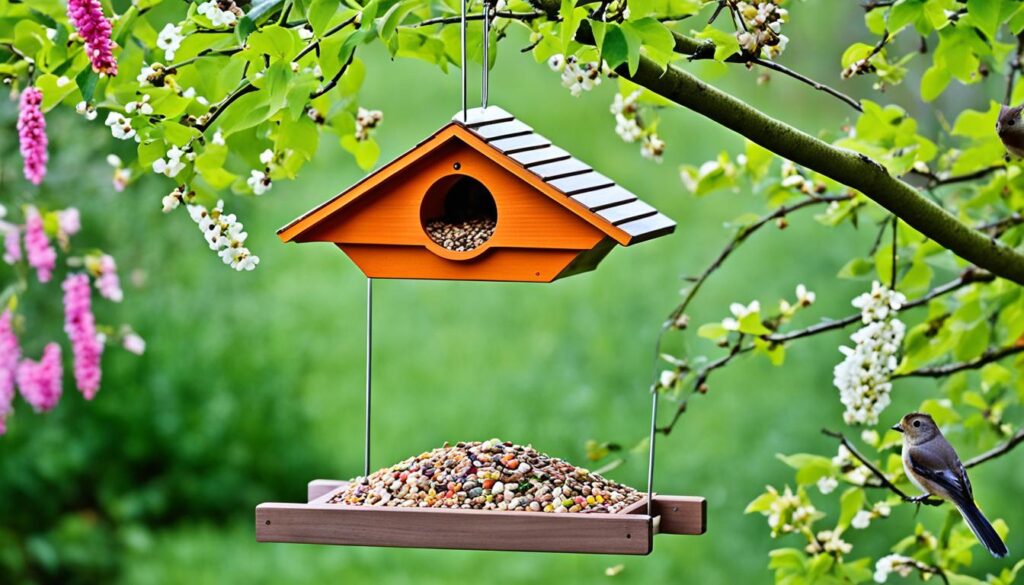Did you know outdoor cats kill over 1 million birds every year? This sad fact might explain why your new bird feeder isn’t as popular as you think it should be. Birds can be picky about where they eat. Even if you’ve set up a great feeding spot, they might stay away for many reasons.
Seeds can go bad, and where you hang your feeder is key. The birds might also be avoiding danger, like cats or hawks. Plus, their usual foods changing with the seasons can play a part. By knowing these hurdles, you can work to make your feeder a safe and inviting place for the birds you love.
Key Takeaways
- Birds may take 3-4 weeks or longer to start using a new feeder due to cautious behavior.
- Improperly stored, spoiled, or low-quality seed can deter birds from visiting your feeder.
- Predators like cats, hawks, and squirrels can scare birds away from your feeding station.
- Seasonal changes in natural food availability can impact bird feeding habits.
- Proper feeder placement, cleanliness, and seed selection are crucial for attracting and retaining bird visitors.
Common Reasons Birds Avoid Bird Feeders
If you’ve put up a bird feeder and no birds are visiting, don’t lose hope. Birds might avoid it for several common reasons. Understanding these reasons will help you make your yard a better place for them. Soon, you’ll see more birds enjoying your garden.
Presence of Predators
Big predators, like raccoons and squirrels, can keep smaller birds away. It’s important to put your feeder high up to keep these animals off. Use a system that prevents them from getting to the food.
Stale or Moldy Seed
It’s vital to check your bird food often. Look for mold caused by rain or long exposure. Offer only fresh seeds to entice the birds. Clean your feeder every two weeks to keep it safe and inviting.
Excessive Noise Levels
Loud noises from streets or activities can frighten birds. Placing your feeder in a quiet spot helps make birds feel safer. This will encourage them to visit more often.
Seasonal Availability of Natural Food Sources
Birds like natural food better, especially when it’s plentiful in the wild. They might not use your feeder much in warm months. Remember, being patient and flexible is important for attracting birds throughout the year.
Feeder Blockages
If your feeder is clogged, birds won’t be able to eat. Make sure the seed can come out easily. This ensures birds can get their food without any problems.
Acclimating to New Feeders
Sometimes, birds need time to get used to a new feeder. Keep at it, and they will eventually come. It can take a while before they feel comfortable enough to feed.
By tackling these issues, your bird feeder can become the best spot for birds in your area. This will attract many different birds to your garden.
Presence of Predators Deters Feathered Visitors
The reason birds might steer clear of your feeder is due to nearby predators. The birds you wish to see at your feeder are often small and easily threatened. For them, the risk is too great for a meal. Creatures like raccoons, squirrels, chipmunks, and bigger birds all present a menace.
Even if a domestic cat or a pet looks out a window, it can scare away the birds. Birds like to be able to see around them clearly and have a way to run if they need to. To make your yard inviting to birds, ensuring it’s safe from predators is fundamental.
Deterring Predators for a Bird-Friendly Feeder
- Install feeder poles with predator baffles or weight-sensitive perches to prevent larger animals from accessing the food.
- Position feeders at least 10-12 feet away from trees, shrubs, or other potential hiding spots for predators.
- Use squirrel-proof feeder designs and consider adding a cage or cage-like structure around the feeder to keep out unwanted visitors.
- Regularly clean and maintain your feeder to ensure it remains in good working order and doesn’t attract pests.
Creating a safe and inviting space is key to attracting many bird species. This invites the birds to share their beauty with us in outdoor spaces.
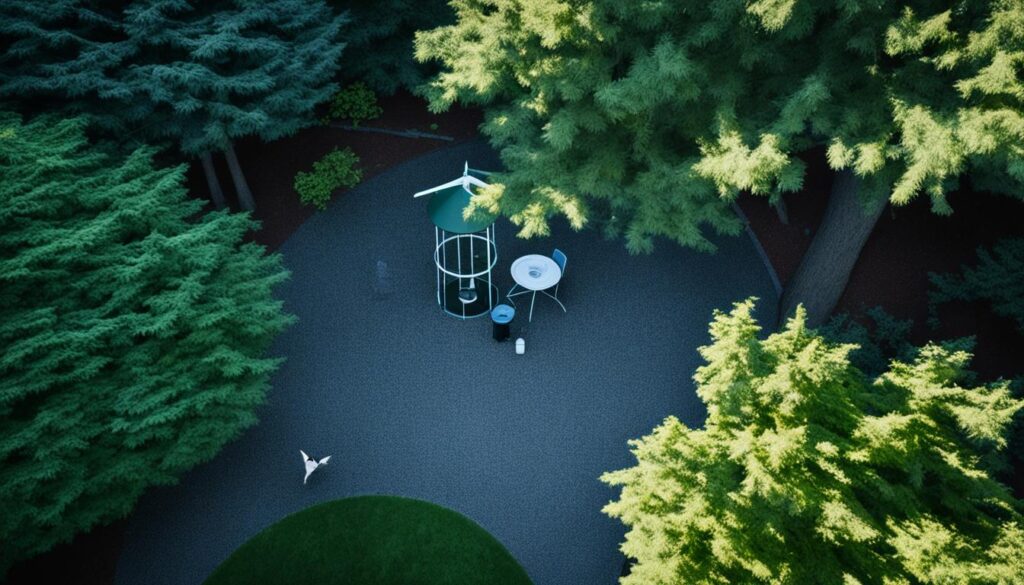
“The presence of predators is a constant concern for birds, and they will instinctively avoid areas where they feel unsafe. Ensuring your feeder is secure and predator-proof is crucial for attracting and retaining a vibrant bird population.”
It’s important to think beyond just food when welcoming birds. Safety and comfort play a vital role in making a place where birds can thrive.
Stale or Moldy Seed Discourages Feeder Traffic
Birds might stay away from your feeder if the food is old or moldy. It’s easy to see why fresh, tasty snacks are a must. You should always have good, fresh food for the birds to keep them interested.
Ensuring Fresh and Appealing Food Sources
Want to get more birds at your feeder? Make sure the seeds are always fresh and clean. Here’s how to do it:
- Check the seed often for mold or smell. Throw out any that looks off and put fresh food out.
- Keep extra seeds in a cool, dry spot in a sealed container. This stops them from going bad early.
- Give a mix of seeds, like mealworms, suet, and nyjer, to please different bird types.
- Avoid human food like bread as it’s bad for birds. Stick to what’s healthy for them.
- Scrub the feeder with vinegar now and then to keep it clean.
By always having fresh food in your feeder, you’ll invite all kinds of birds over.
“Providing high-quality food can appeal to as many bird species as possible.”
Offer birds what they like to eat, and you’ll see more of them around. Enjoy the view of your lively bird sanctuary!
Excessive Noise Levels Scare Away Birds
If your feeder is in a noisy place, this might keep birds away. Loud sounds like traffic, kids playing, or adults shouting can scare them. These loud noises can make birds think there’s danger. That’s why they avoid your feeder.
Some studies show that sound devices can cut local bird numbers by half. The noise from people can really harm birds in places like national parks. At the University of Colorado, researchers found that constant noise messes up bird songs and communication during mating.
Noise can make birds more stressed and hurt their health. Changing the loud sounds used to shoo birds can help. It stops them from getting used to one specific noise. This makes the noise scare tactic more effective. But, the loudness and type of sound should not harm other creatures.
| Noise Level Impact | Percentage Reduction in Bird Population |
|---|---|
| Targeted sound devices | Up to 50% |
| Noise pollution from human activities | Significant impact on national park bird populations |
| Constant exposure to noise pollution | Disrupts bird singing patterns and communication |
| Elevated stress hormone levels | Influences bird immune systems and reproductive success |
To help your bird visitors feel more welcome, avoid loud areas for your feeder. Also, you can try to reduce the noise. This might include plants or special materials to block sound.
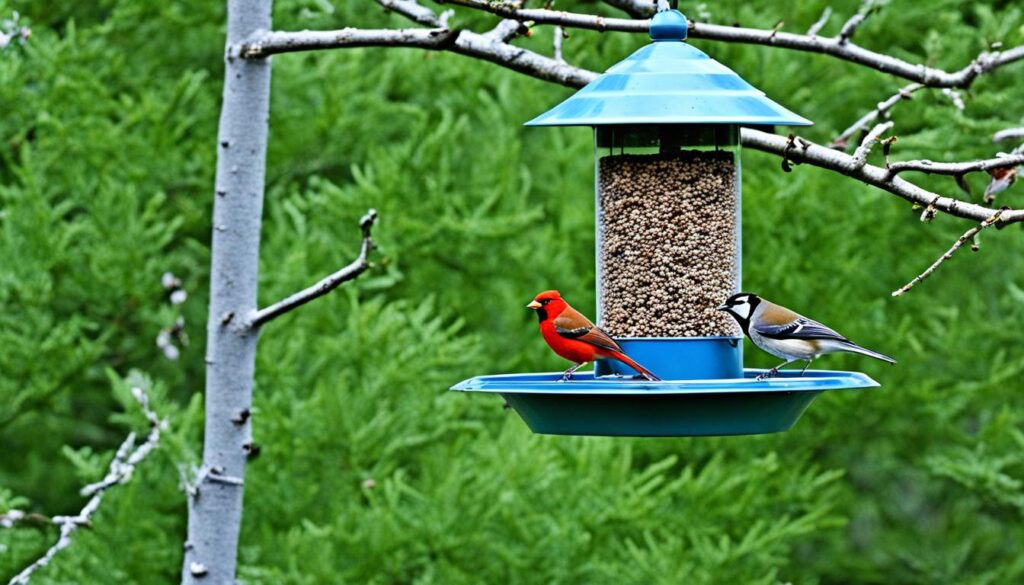
Seasonal Availability of Natural Food Sources
As seasons change, birds’ eating habits change too. You might see less bird action at your feeder. This happens because they find food in the wild.
In warm months, birds have lots to eat from nature. There are bugs, berries, and flower nectar. Your feeder may look less interesting to them then.
Adapting to Changing Dietary Preferences
To keep birds coming to your feeder, adjust with the seasons. Try different seeds like black-oil sunflower seeds, nyger, and suet. This mix attracts a wide variety of birds.
Also, placing a birdbath nearby helps. Birds often look for water, especially when it’s hot. A water source can make your yard a bird magnet.
Understanding when birds need your help can keep them around. Changing what’s in your feeder, with the season, works wonders. It keeps your yard lively with birds anytime.
“The key to attracting birds to your feeder year-round is to adapt to their changing needs and preferences. Offering a variety of seed types and providing a reliable water source can go a long way in keeping your feathered friends coming back, even when their natural food sources are abundant.”
| Feeding Preferences by Season | Recommended Seed Blend |
|---|---|
| Spring/Summer (abundant natural food) | Black-oil sunflower seeds, nyger seed, suet |
| Fall/Winter (scarce natural food) | Black-oil sunflower seeds, safflower seed, millet |
Blocked or Obstructed Feeder Openings
If your feathered friends seem to be avoiding your feeder, the issue might be simple: blocked openings. Most bird feeders have a place for seeds and another for overflow. It’s key to keep these spots clear. This ensures birds can get to the food.
Things like leaves, pebbles, or old food can block these openings. When this happens, birds can’t get to the fresh seed. This leads to fewer birds visiting.
Thus, it’s vital to check your feeder often. Make sure everything is clear of debris. By doing this, more birds will be able to eat at your feeder.
| Feeder Type | Recommended Clearance | Benefits |
|---|---|---|
| Tube Feeders | 2-3 inches around the feeding ports | Allows multiple birds to feed simultaneously without crowding |
| Hopper Feeders | 4-6 inches around the seed tray | Provides ample space for larger birds to comfortably access the seed |
| Suet Feeders | 3-4 inches around the suet compartment | Prevents clogging and ensures easy access to the high-energy suet |
By keeping your feeder’s spots clear, birds can eat easily. They’ll come to your feeder more often.
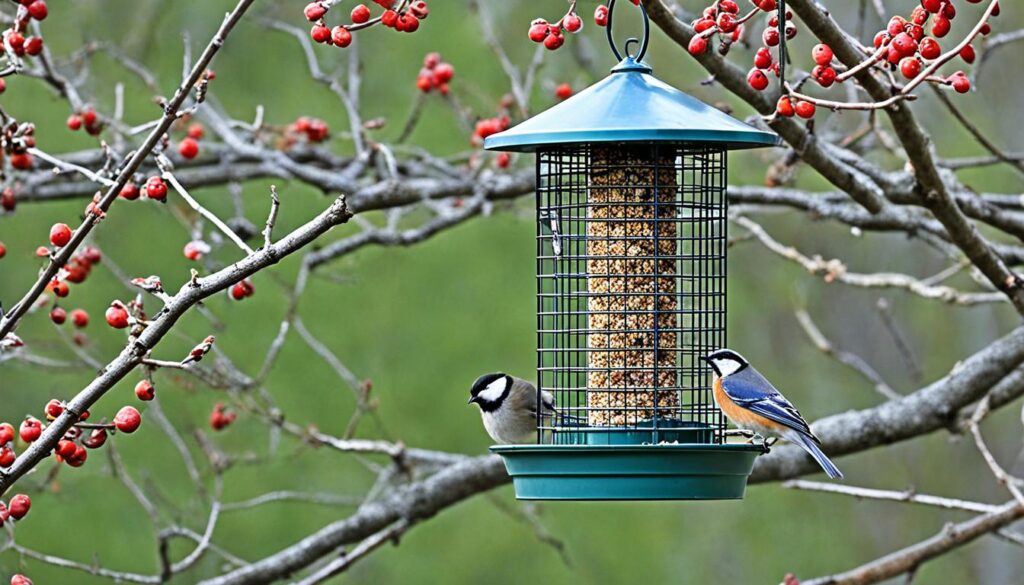
“Ideally, feeders should be kept unobstructed for an excellent viewing experience.”
Acclimating Birds to a New Feeder Setup
If you’re starting bird feeding, you might see your birds avoiding the feeder. This is normal. Birds often take their time before exploring new food sources. Yet, with some patience and the right steps, you can make them feel welcome.
Patience is Key for Establishing a Routine
Introducing birds to a new feeder setup requires patience. They are cautious by nature and need to feel safe before they trust the feeder. The location of the feeder is also critical. It should be safe from predators and easily seen by birds.
Scattering a little seed around the feeder can attract birds. It acts like a trail of breadcrumbs to the feeder. But be careful not to put too much seed. This might bring in squirrels or raccoons unwanted.
- Be patient and give the birds time to discover and acclimate to the new feeder.
- Strategically place the feeder in a safe and visible location.
- Scatter a small amount of seed around the feeder to encourage initial visits.
- Avoid overfeeding, which can attract unwanted guests and disrupt the natural feeding patterns.
Given some time and steady effort, local birds will get used to your feeder. By adapting to their cautious nature, you can make them feel at home. This approach will encourage them to visit your feeder often.
Improper Seed Storage Leads to Spoilage
It’s key to keep your bird feed fresh for your winged friends. Not storing seeds right can cause them to spoil. Birds might not come to your feeders if your seed isn’t good. Understanding the issue of why are birds not involves storing your feed correctly.
Old or moldy seed is a big turn-off for birds. Seeds can go bad fast in hot, humid, or wrong storage areas. How fresh and clean your bird seed is affects if birds will eat it.
- Only get as much seed as you’ll use in a few weeks. Buying in bulk can go wrong if the seed spoils.
- Keep seed in a sealed container in a cool, dry spot. Don’t leave it in the bag since that can attract moisture and bugs.
- Watch your seed for any signs of mold or insects. Toss out any bad seed right away to keep the others safe.
Stick to these tips to keep your bird seed fresh. It’s vital for having happy and healthy birds around. Knowing why are birds not coming to my feeder starts with how you store the seed.
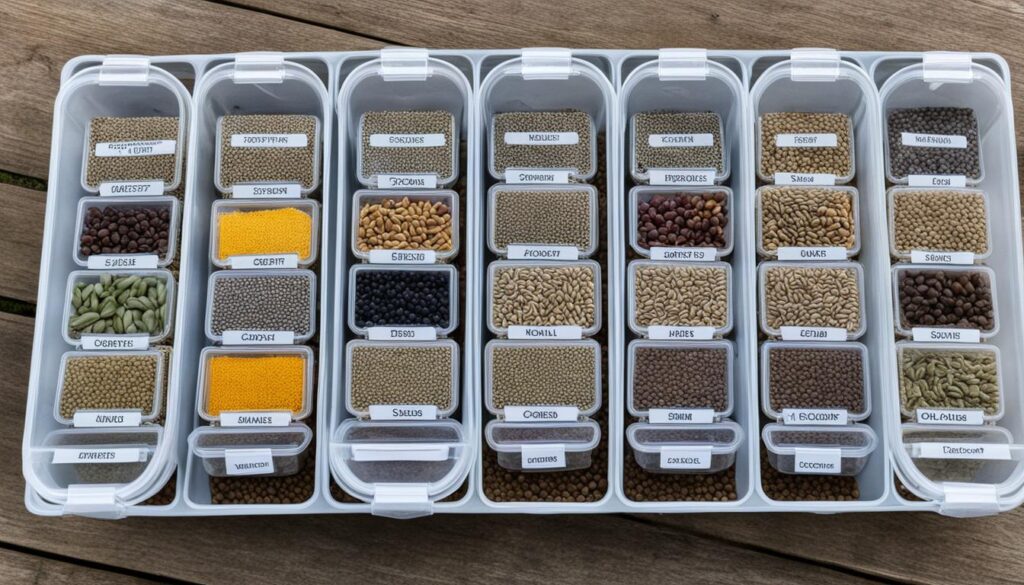
“Maintaining the freshness of your bird feed is crucial to attracting and retaining your feathered visitors.”
By storing your seeds right and knowing how long they last, you can fix the lack of bird feed issue. Doing this ensures birds have a reliable food source. Your yard will become a favorite spot for birds.
Maintaining Feeder Cleanliness and Hygiene
Keeping your bird feeder clean is crucial for attracting and keeping birds. If you don’t, mold, bacteria, and other harmful things can grow. These can make birds sick. Regular cleaning will help your bird population stay healthy and happy, always coming back to your bird feeder.
Preventing Mold and Bacterial Growth
Mold and bacteria love bird feeders, especially in wet places. These can make the food bad and cause bird sickness. You should clean your feeder at least once a month. Clean it more often if you see mold or dirt.
- Take your feeder apart, and clean everything with a mix of mild soap and warm water.
- Scrub it well to make sure all dirt is gone.
- Next, dunk the feeder in a solution of bleach diluted with water (1:9) for 10-15 minutes.
- Rinse everything again and let it dry completely before you put it back together and add new food.
By keeping your feeder clean, you protect birds from diseases and make sure they get fresh food. This makes your feeder a place where birds want to be, solving the problem of why are birds not coming to my feeder.
“Keeping your bird feeder clean is one of the most important things you can do to ensure the health and well-being of your feathered friends.”
Cleaning your feeder regularly helps the birds and makes your feeder last longer. A clean feeder is welcoming to birds, making them come back for more of your treats.
Offering the Right Seed Blend for Local Species
If birds aren’t coming to your feeder, it might be the seed you’re using. Different birds like different seeds. It’s key to choose a seed mix that local birds in your area enjoy. This can bring a lot more birds to your yard.
In the United States, there are over 250 bird species. However, the number of local species can change, from 50 to over 150. This depends on where you are, the local environment, and the resources available. Most local birds, about 78%, prefer feeders with the right seed mix. But, 22% won’t come to feeders that have the wrong blend.
When you pick a seed blend, think about what many birds like. Experts suggest a mix that includes 40% sunflower seeds, 30% nyjer seeds, 20% millet, and 10% safflower seeds is best. This mix has nutrients for a wide range of birds, such as finches, chickadees, cardinals, and nuthatches.
Stay away from cheap seed mixes with fillers like milo, corn, or wheat. These grains don’t attract many birds. Birds notice when food isn’t what they like and go elsewhere.
“The key to attracting a wide range of birds to your feeder is to offer a seed blend that closely matches the dietary preferences of the local avian community.”
By picking the right seed blend, your yard can become a busy spot for various bird species. This way, the birds will enjoy and often visit your feeder.
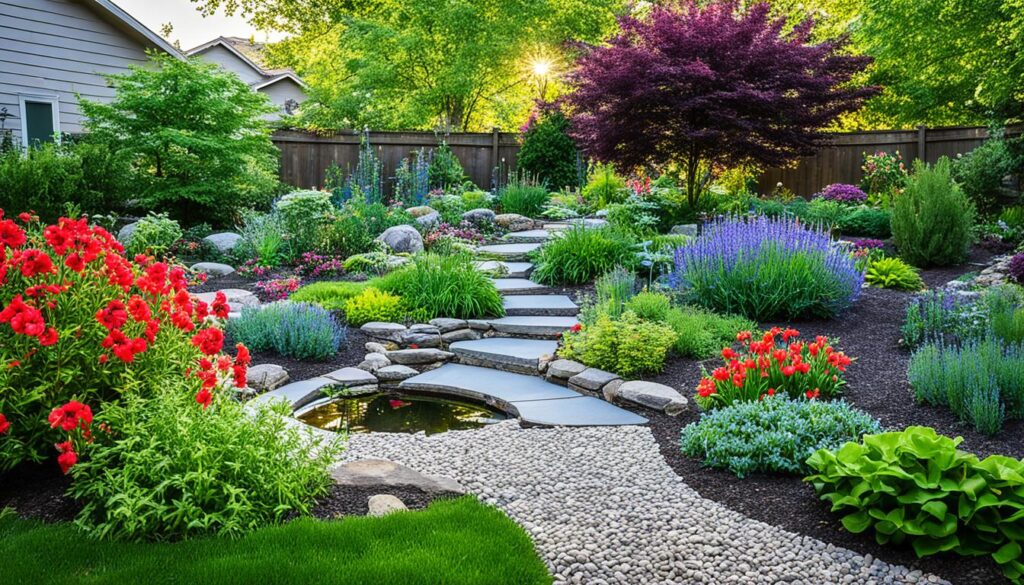
why are birds not coming to my feeder
If you’ve put up a new bird feeder but haven’t seen any birds yet, don’t worry. There are various reasons why they might be staying away. Knowing these reasons can help you adjust things to make your yard more bird-friendly.
Presence of Predators
Birds are cautious by nature and will avoid feeders in danger zones. Predators like cats, hawks, or squirrels can keep birds away. To make birds feel safer, place your feeder in the open and consider using feeders that are hard for predators to access.
Stale or Moldy Seed
Birds look for fresh, quality seed. If the seed in your feeder is old or has gone bad, birds won’t come. Keep your feeder clean and use fresh seed to draw birds to your yard.
Noise and Disturbances
Loud noises, like construction, or too much activity can startle birds. Placing your feeder in a quiet spot can help them feel more at ease.
Availability of Natural Food Sources
Sometimes, birds just prefer finding their own food naturally, like insects, berries, or seeds. They may return to your feeder later when natural sources run low. Watch and wait through the seasons.
Feeder Obstructions
Blocked feeder ports can stop birds from feeding. Make sure your feeder is clean and accessible for them.
If birds aren’t coming to your feeder, there are common issues to look into. By making your yard friendlier to birds, you’ll soon see them enjoying your feeder. All it takes is some patience and a few changes.
“The key to attracting birds to your feeder is to understand their needs and preferences. By creating a safe, clean, and appealing environment, you’ll be well on your way to a thriving backyard bird community.”
| Reason | Solution |
|---|---|
| Presence of Predators | Use predator-proof feeders and place them in open areas |
| Stale or Moldy Seed | Regularly clean the feeder and replace the seed |
| Noise and Disturbances | Place the feeder in a quieter location |
| Availability of Natural Food Sources | Be patient and observe seasonal patterns |
| Feeder Obstructions | Ensure the feeding ports are clear and accessible |
Spacing and Placement of Multiple Feeders
Attracting a variety of birds to your backyard is all about where you put your feeders. Place some feeders close for easy birdwatching. But others, like specialty finch feeders, need space, at least 10 feet apart from others.
Optimizing Feeder Arrangements for Different Species
Birds are picky about their dining spots. Finch feeders work better off on their own, far from larger birds. Yet, birds like sparrows and chickadees love hanging out near several feeders together.
Think about what each bird type likes when placing feeders. Try different spots and see how they react. It helps you make a bird-friendly area suited to your flying guests.
| Feeder Type | Recommended Spacing | Suitable Bird Species |
|---|---|---|
| Tube Feeder | 3-5 feet apart | Finches, Titmice, Chickadees |
| Hopper Feeder | 5-10 feet apart | Sparrows, Juncos, Doves |
| Platform Feeder | 10 feet or more apart | Jays, Blackbirds, Grackles |
By thinking about the feeder location and feeder accessibility, you make your yard more bird-friendly. This can answer the why are birds not coming to my feeder question and make birdwatching in your yard better.
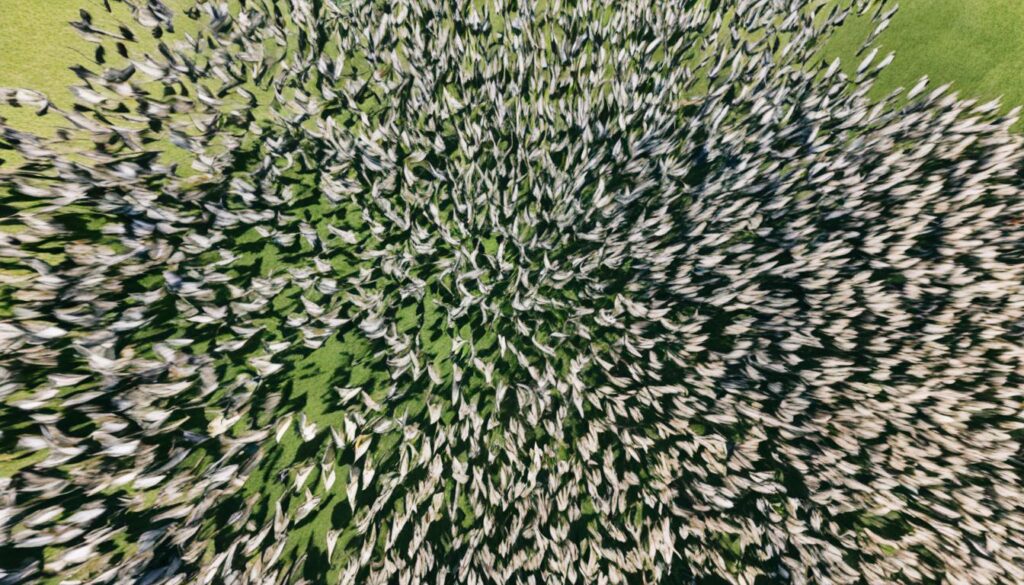
Natural Cycles and Migratory Patterns
Understanding when birds come to your feeder is crucial for its activity. Birds like to visit feeders all year, but they are most active in the migration and nesting seasons. The birds come and go depending on available natural food.
In fall, birds might visit less as they find plenty of food from the season. This could be acorns for jays and woodpeckers. So, as the seasons change, bird diets and behaviors change too.
More than half of North American birds, about 650 species, migrate. They fly south from places like the U.S. and Canada to Central and South America. This journey covers around 350 bird species and is truly amazing.
Some birds even lay more eggs when they migrate to better food and longer days. For example, around 500,000 Sandhill Cranes and some endangered Whooping Cranes gather in the Central Platte River Valley in Nebraska during their flight north.
Moving lets birds get plenty of food and find good places to have babies. But, it comes with risks like stress, not enough food, harsh weather, and more predators. Sadly, millions of birds crash into tall structures and communication towers each year. This is a big danger for migrants.
Scientists use many tools to study bird migration, like banding, tracking with satellites, and geolocators. They help find important stops and winter homes for our flying friends. Learning about these can help us help the birds we want to see at our feeders.
“Understanding the natural rhythms and migration patterns of birds is key to maintaining an active and vibrant feeder.”
Faulty or Defective Feeder Designs
Having the right feeder can invite birds or turn them away. A badly designed or broken feeder might keep birds from eating there. Your efforts to feed birds could go to waste.
The main thing for birds is easy access to food. A feeder that’s hard to get food from will make them go elsewhere. It’s key to regularly check and fix your feeder to avoid this problem.
Identifying and Addressing Feeder Design Flaws
- Inspect your feeder for any cracks, holes, or loose parts that could prevent birds from reaching the seed easily.
- Ensure that the feeder’s perches are in good condition and provide a stable platform for birds to land on and feed.
- Check that the seed ports or openings are of an appropriate size and shape for the species you’re trying to attract.
- Look for any obstructions or obstructions that might hinder the birds’ access to the food.
To make your feeder more bird-friendly, fix these flaws. It’ll welcome birds back to your garden.
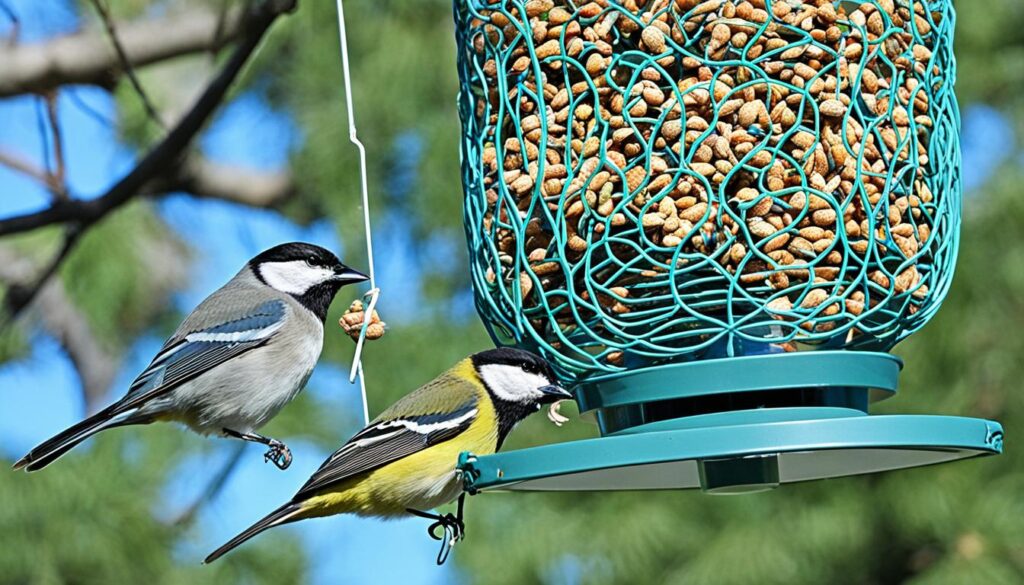
Keeping your feeder clean and running well ensures birds always find food at your place. Fixing the design lets you welcome more birds. They’ll be happy to come and stay in your backyard.
Conclusion
If your bird feeders aren’t attracting birds, there could be many reasons why. Things like predators and the time of year can affect it. It’s important to know what influences bird activity at your feeders. By fixing issues with the seed, the feeder, and its location, you can bring back the birds.
Having a variety of plants, habitats for insects, and keeping feeders clean helps birds. You should also think about when birds migrate and adjust your feeding. This way, you can enjoy seeing them all year round.
Keep in mind that nature always changes, and many things can affect bird behavior. With some patience and the right care, you can make a place where birds love to come. If you need more help, Wild Birds Unlimited can give you advice tailored to your situation.
FAQ
Why aren’t birds visiting my new bird feeder?
There are many possible reasons birds are not coming to your feeder. It’s more than just “build it and they will come.” Think about what birds like and make your feeder inviting for them. Making a few tweaks can turn your feeder into a hot spot for our feathered friends.
Could the presence of predators be deterring birds?
If predators like cats or larger birds are nearby, smaller birds might not feel safe. Keeping your feeder setup safe from these dangers can help. This way, the birds will know it’s a secure place.
Could the food in my feeder have gone bad?
And do remember, fresh food is important for birds to stop by. So, keep an eye on the food. Also, if it’s been rainy, the seeds might have gone bad. Check the state of the food in your feeder regularly.
Could excessive noise be scaring the birds away?
Noise can spook birds too. If your feeder is near a loud area, like a busy street, birds might avoid it. So, a quieter location might bring more visitors.
Do birds have seasonal preferences for natural food sources?
In warm seasons, birds might not use your feeder as much. They can find food easily in nature then. Offering a variety of seeds and a birdbath can attract them even in warm weather.
Could the feeder openings be blocked or obstructed?
Your feeder’s design may be preventing birds from accessing the food. Check it for any clogs, like leaves or old food. This could explain why they’re not using it.
How long does it take for birds to get used to a new feeder?
New feeders might take birds some time to approach. Birds are cautious by nature, especially around new things. Give them time and space. Eventually, they’ll come around.
How can I ensure I’m providing fresh and appealing bird seed?
Moisture and heat can spoil seeds, just like food for us. Buy in small amounts and store carefully. Clean feeders regularly to prevent mold and bacteria.
What type of bird seed blend should I offer?
Choosing the right seed and feeder combo is key. Avoid blends with fillers like milo or wheat. They’re not as attractive to songbirds, who might just pick out the best seeds and leave.
How should I space and arrange multiple feeders?
Group feeders based on type. Some can be close together, but others need space. Finches, for example, prefer their feeders at least 10 feet apart.
Do birds visit feeders year-round?
Bird feeder activity varies by season. Fall sees less feeding as wild food is plentiful. But all other times, you can expect your feeder to be busy.
What makes a feeder design effective?
An efficient feeder design is essential. It should be in good shape and easy for birds to get food from. This ensures your feathered visitors will enjoy it.
